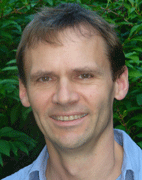GOOD NEWS We are on track and going into phase 2!

Director NCCR RNA & Disease
Even if it feels as if we had only just launched our NCCR RNA & Disease, it is an undeniable fact that we have already entered the 4th and therewith last year of its first phase. NCCRs can run for three phases of four years each and each new phase needs to be applied for at the SNF with a pre-proposal and one year later with a full proposal. We are currently in the midst of this application process for phase 2 and I would like to give you some information on where we stand and where we plan to go.
During the past 3 years, the NCCR RNA & Disease grew from the 16 founding groups to a Swiss-wide research network with 23 full member groups and 20 associated groups. In the meantime, first joint publications between two or more NCCR labs came out, documenting that our efforts to foster interactions and collaborations within the network are starting to bear fruits. As pointed out by the SNF review panel at their annual site visits, our research projects overall are judged as “excellent” and “top quality”. This is also reflected by the already more than 50 publications, many of which were published in the most prestigious international science journals.
Top quality research requires top quality researchers. This is the right moment to thank all of you who dedicate most of your time every day to investigate important scientific questions and overcome countless challenges, in order to develop new and smart solutions or make exciting new discoveries. We can indeed be proud of our PhD students and postdocs, whose talent and effort has also been recognized by the SNF review panel, which wrote in their 3rd year report: “The panel has been very impressed by the general enthusiasm, engagement and knowledgeability of the junior researchers.” With this as the basis and a continued effort to further intensify collaborations among the NCCR labs, our research is clearly on target. We also received good marks from the review panel on our other activities regarding training and education, equal opportunities, knowledge and technology transfer (KTT), and communication.
With everything essentially on track, it came as no surprise that the SNF research council has decided that the NCCR RNA & Disease is to be continued in a phase 2. Nevertheless, this official confirmation is a big relief. What is still unknown is the financial contribution by the SNF for phase 2, which in the worst case can drop to 80% and in the best case increase to 120% of that of phase 1. This will depend on the evaluation of our full proposal and on how we are rated compared to the other NCCRs of our generation. It is our NCCR’s declared goal to avoid any cuts and secure between 100 and 120%. With this ambition declared, it is needless to say that for the next 8 months the top priority of the management team is to compose a strong and convincing full proposal that incorporates the feedback of the SNF review panel on the pre-proposal in the most constructive way possible. The recent General Assembly (held in La Neuveville on June 12) was a first step in this direction. We discussed strategically important issues for phase 2 and for the full proposal and together with the support of all involved PIs, postdocs and PhD students, the management team has now begun to work towards implementing necessary adjustments.
Overall, the general directions proposed in the pre-proposal were received positively by the review panel and will be pursued. We want to continue in phase 2 with a broad and diverse research portfolio that comprises a healthy balance between “high risk – high gain” projects addressing basic problems and projects that address a concrete disease or medically relevant issue. To deliver top quality research will remain a top priority also in phase 2. Regarding our ambition of creating a rather inclusive network for all RNA research in Switzerland and to optimally support young and promising researchers in this field, we hope to be able to even grow the network a little further in phase 2.
As you can see, the goals are set. Now let’s start working towards realizing them!